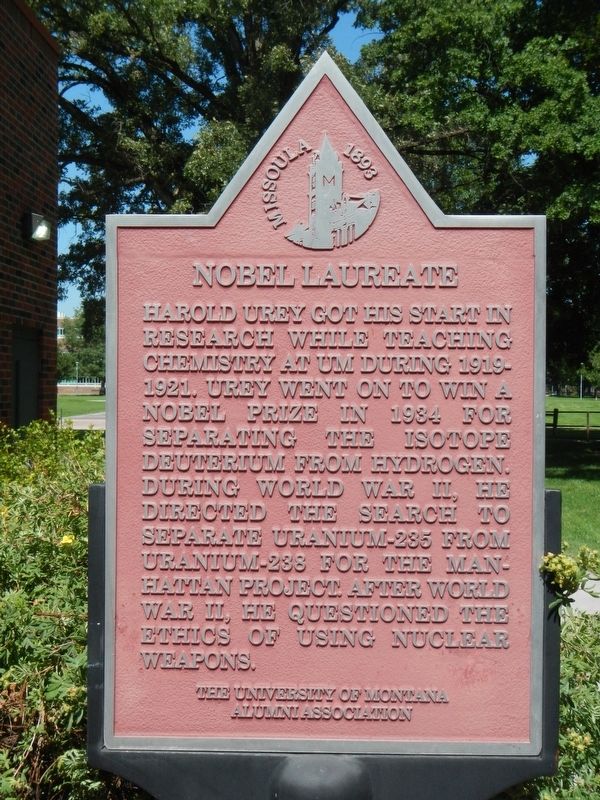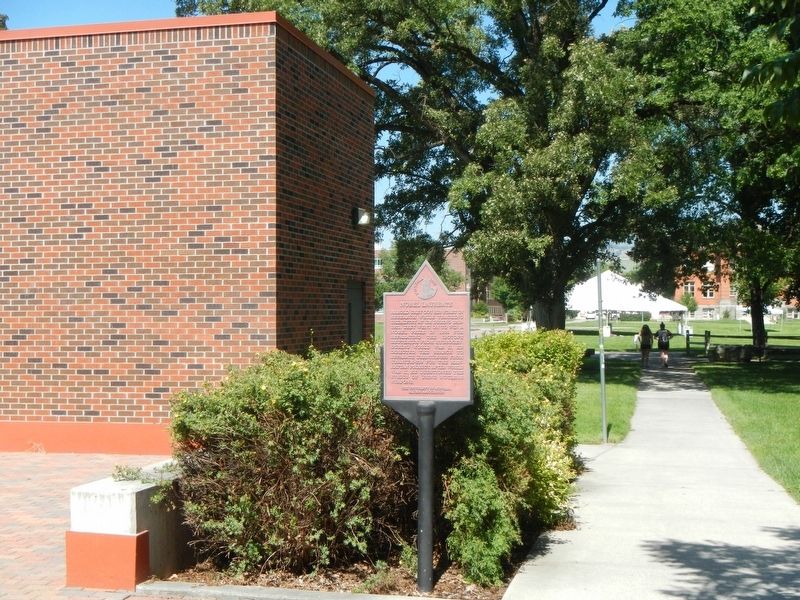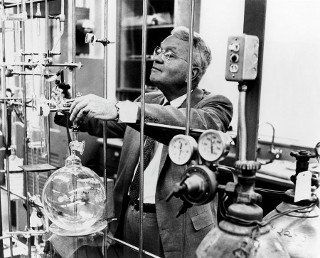Missoula in Missoula County, Montana — The American West (Mountains)
Nobel Laureate
Erected by University of Montana Alumni Association.
Topics. This historical marker is listed in this topic list: Science & Medicine.
Location. 46° 51.551′ N, 113° 59.106′ W. Marker is in Missoula, Montana, in Missoula County. Marker is on Campus Drive. This marker is located on the University of Montana campus. See https://www.campus-maps.com/umt/ for an interactive campus map. Touch for map. Marker is at or near this postal address: 32 Campus Drive, Missoula MT 59812, United States of America. Touch for directions.
Other nearby markers. At least 8 other markers are within walking distance of this marker. Women's Hall (within shouting distance of this marker); Journalism Building (within shouting distance of this marker); Chemistry-Pharmacy Building (within shouting distance of this marker); Forestry Building (about 300 feet away, measured in a direct line); Women's Club Art Building (about 400 feet away); The Oval (about 400 feet away); University Hall (about 400 feet away); First Architect (about 500 feet away). Touch for a list and map of all markers in Missoula.
Also see . . . Harold Urey -- Famous Scientist -- The Art of Gensis. Harold Urey discovered deuterium, for which he was awarded the Nobel Prize in Chemistry. Urey’s work made a significant impact in an unusually wide range of scientific fields:
• he discovered how our planet’s previous climates can be found from the ratio of oxygen’s isotopes in carbonate rocks
• he was in charge of a team of 700 scientists in the Manhattan Project working on isotope separation
• he coined the term cosmochemistry and founded modern planetary science
• he deduced that Earth’s early atmosphere consisted mainly of hydrogen, ammonia, methane, and water and that these would react with one another when lightning passed through them. His graduate student, Stanley Miller, performed the famous Miller-Urey experiment which demonstrated that when electric sparks pass through a mixture of these simple gases the products are amino acids – the building blocks of life. (Submitted on January 5, 2020, by Barry Swackhamer of Brentwood, California.)
Credits. This page was last revised on January 5, 2020. It was originally submitted on January 5, 2020, by Barry Swackhamer of Brentwood, California. This page has been viewed 105 times since then and 8 times this year. Photos: 1, 2, 3. submitted on January 5, 2020, by Barry Swackhamer of Brentwood, California.


